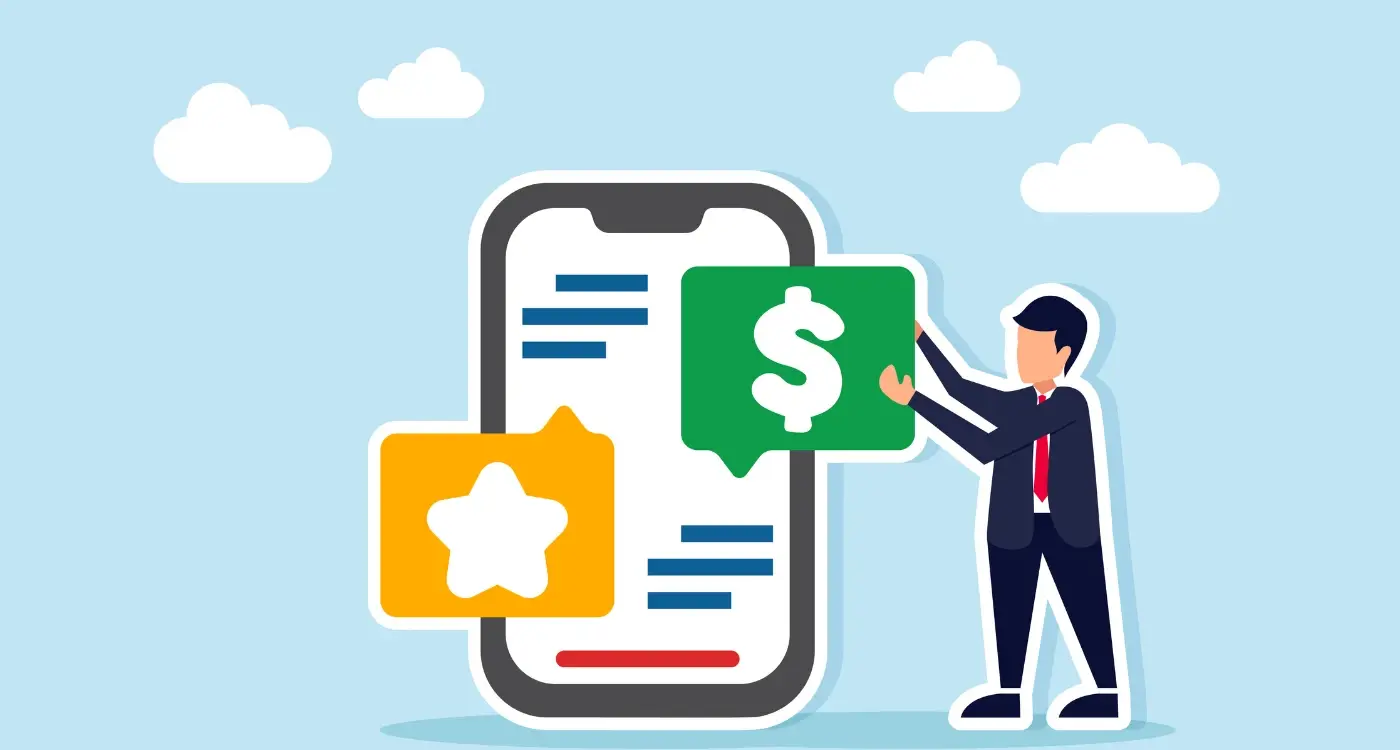How Do I Prove ROI Of A Mobile App To My Boss?
You've got a brilliant mobile app idea that could transform your business, but your boss keeps asking the same dreaded question—"What's the return on investment?" You're not alone. Studies show that over 70% of mobile app projects struggle to demonstrate clear ROI, leaving countless good ideas stuck in boardroom limbo. The thing is, proving mobile app ROI isn't rocket science, but it does require the right approach and data to back up your claims.
Most people make the mistake of thinking app ROI is just about immediate revenue. They focus on download numbers or user registrations and wonder why their boss isn't impressed. But mobile app return on investment goes much deeper than surface-level metrics—it includes cost savings, productivity gains, customer retention improvements, and long-term business value that might not show up in your first quarterly report.
The biggest challenge isn't building the app; it's building a compelling business case that shows exactly how this investment will pay for itself
This guide will walk you through the exact process we use to help our clients justify app investment to their stakeholders. You'll learn how to set measurable goals, track the right data, and present your findings in a way that gets approval. Whether you're looking to build your first app or expand your mobile strategy, understanding how to prove ROI is what separates successful projects from expensive experiments.
Understanding What Mobile App ROI Actually Means
Right, let's get straight to the point—mobile app ROI isn't just about money in versus money out. I mean, that's part of it, but there's so much more going on beneath the surface that most people miss completely.
When we talk about return on investment for mobile apps, we're looking at both the obvious financial gains and the less obvious benefits that can transform your business. The hard returns are things like increased sales, reduced operational costs, or new revenue streams your app creates. These are the numbers your finance team loves because they're concrete and measurable.
The Numbers Game Gets Complicated
But here's where it gets interesting—and where most people get stuck. Soft returns can be just as valuable, sometimes more so. We're talking about improved customer satisfaction, stronger brand loyalty, better data collection, or streamlined internal processes. These benefits might not show up immediately on your profit and loss statement, but they build the foundation for long-term success.
Think about it this way: if your app saves each customer five minutes per transaction and makes them happier with your service, that's ROI even if you can't put a pound sign in front of it straight away. The trick is learning how to measure and present both types of returns in a way that makes sense to your boss. If you're still wondering will my business benefit from a mobile app, understanding these different types of returns is crucial to making that determination.
Setting Clear Goals Before You Build
Here's something I learnt the hard way after years of building mobile apps—if you can't clearly explain what success looks like before you start coding, you'll never be able to prove mobile app ROI to anyone who matters. I've watched countless businesses build beautiful apps that nobody wanted, simply because they skipped this bit.
Your app goals need to connect directly to business outcomes that your boss actually cares about. This isn't about downloads or five-star reviews (though they're nice to have). We're talking about measurable business impact that affects the bottom line.
Define Your Success Metrics Early
Before you write a single line of code, nail down exactly what you're trying to achieve. Are you looking to reduce customer service costs? Increase sales conversion? Improve customer retention? Each goal requires different tracking and measurement approaches to justify app investment later on.
- Revenue generation—direct sales through the app
- Cost reduction—fewer support calls, reduced manual processes
- Customer engagement—increased purchase frequency, longer session times
- Operational efficiency—streamlined workflows, reduced processing time
Write your goals down as specific, measurable statements. Instead of "improve customer experience," try "reduce average customer service response time by 30% within six months of app launch."
Getting this foundation right makes building your app business case so much easier down the line. Trust me on this one.
Tracking the Right Numbers From Day One
Right, let's talk about the metrics that actually matter—not the vanity numbers that make you feel good but don't pay the bills. After building apps for countless clients, I can tell you that tracking the wrong things is one of the biggest mistakes I see teams make. Downloads look impressive on a slide deck, but they won't convince your boss if those users disappear after one session.
Start With These Core Metrics
Before your app even launches, you need to know which numbers you'll be watching. Think about it this way: if you can't measure it, you can't prove it worked. The key is picking metrics that directly connect to your business goals—the ones we talked about in the previous chapter.
- Daily and monthly active users (not just downloads)
- Session length and frequency
- User retention rates at 1 day, 7 days, and 30 days
- Conversion rates for your primary goals
- Revenue per user (if applicable)
- Customer acquisition cost through the app
- Support ticket reduction (if that's a goal)
Don't Wait Until Launch
Here's something that might surprise you—the best time to set up your tracking is before you build anything. I've seen too many teams scramble to add analytics after launch, only to realise they're missing weeks of valuable data. Set up your measurement framework early and you'll thank yourself later when your boss asks for those ROI numbers.
Calculating Hard Financial Returns
Right, let's get down to the numbers that actually matter—the ones your boss will care about most. Hard financial returns are the concrete, measurable pounds and pence that your mobile app generates or saves your business. These aren't fluffy metrics or nice-to-have benefits; they're real money that hits your bottom line.
Revenue Generation
Start with the obvious stuff. How much money is your app making directly? This could be through in-app purchases, subscription fees, or premium upgrades. But don't stop there—look at indirect revenue too. Maybe your app doesn't sell anything itself, but it's driving customers to make purchases elsewhere. Track those sales that started with an app interaction.
Cost Savings
Here's where things get interesting. Your app might be saving money rather than making it, and these savings are just as valuable as revenue. If your app reduces customer service calls, cuts down on manual processes, or eliminates the need for printed materials, calculate exactly how much that's worth per month. Learn more about 4 ways your app development projects can improve your company's customer service to understand the full potential for cost savings.
The best mobile app ROI calculations combine both direct revenue and cost savings to show the complete financial picture
Remember to factor in reduced operational costs, fewer staff hours spent on repetitive tasks, and any efficiency gains. These numbers add up quickly and often surprise people with how significant they are when you put them all together.
Measuring Soft Benefits That Matter
Not everything valuable shows up on a spreadsheet—and that's where most people get stuck when proving their app's worth. I've watched brilliant apps get canned because nobody could put a number on improved customer satisfaction or brand loyalty. These soft benefits are real, they just need a different approach to measurement.
Customer Experience Metrics
Your app probably makes life easier for your customers, but how do you prove it? Start with support ticket volumes—apps that solve problems reduce the number of people calling your help desk. Customer satisfaction scores tell another part of the story; if your Net Promoter Score improves after launching your app, that's gold dust for your business case.
App store ratings and reviews give you qualitative data that speaks volumes. Screenshots of five-star reviews mentioning how much easier your app makes things—that's evidence your boss can understand immediately. Understanding the role of mobile apps in enhancing customer engagement can help you identify additional metrics to track beyond traditional ratings.
Internal Efficiency Gains
Don't forget about your own team. If your app automates manual processes or reduces admin work, track the time saved. Here's what to measure:
- Hours saved on manual data entry each week
- Reduction in processing errors
- Staff time freed up for higher-value work
- Improved response times to customer queries
These benefits might not generate direct revenue, but they free up resources and improve your team's productivity—which absolutely has financial value.
Building Your Business Case With Real Data
Right, you've got your numbers—now what? This is where things get interesting because having data is one thing, but presenting it in a way that makes your boss sit up and take notice is quite another. I've seen brilliant mobile app ROI cases fall flat because the presentation was rubbish, and I've seen average cases get approved because they told the right story with the right numbers.
Your business case needs three key components: the problem you're solving, the financial impact, and the risk of doing nothing. Start with the pain point your app addresses—customer complaints, lost sales, or operational inefficiencies. Then show exactly how your app fixes this with hard numbers we covered earlier.
Structure Your Case Around Business Impact
Here's how to organise your mobile app business case for maximum impact:
- Current state: What's costing you money right now?
- Proposed solution: How your app solves specific problems
- Financial projections: Revenue increases and cost savings over 12-24 months
- Risk assessment: What happens if you don't build the app?
- Timeline: When you'll see returns on your app investment
Always include a "do nothing" scenario in your business case. Show what maintaining the status quo will cost compared to building the app—this creates urgency and makes the investment feel less risky.
The magic happens when you connect every feature and function back to a business outcome. Don't just say the app will have push notifications; explain how those notifications will recover 15% of abandoned shopping carts, generating an extra £50k annually. That's the difference between getting a maybe and getting a yes.
Presenting ROI Results That Get Approved
Right, you've done all the hard work—you've gathered your data, calculated your returns, and built a solid business case. Now comes the moment of truth: presenting these findings to your boss in a way that actually gets you the green light.
The biggest mistake I see people make is drowning their audience in spreadsheets and technical jargon. Your boss doesn't need to see every calculation; they need to understand the bottom line quickly and clearly. Start with your strongest number—whether that's cost savings, revenue increase, or efficiency gains—and lead with that. If you need more context around realistic expectations, check out our guide on what ROI can I expect from a mobile app to help set appropriate benchmarks.
Structure Your Presentation for Success
Keep your presentation focused on three key areas that decision-makers care about most:
- Financial impact (hard numbers with clear timeframes)
- Business risk mitigation (what problems the app solves)
- Competitive advantage (how it positions the company better)
- Implementation timeline and resource requirements
Address the Obvious Questions
Be ready for pushback—it's natural. Your boss will likely ask about risks, alternative solutions, and what happens if the app doesn't perform as expected. Having honest answers shows you've thought this through properly, not just cherry-picked the good bits to support your case. Consider exploring when does your business need an app instead of a website to help address questions about alternative solutions and justify your mobile app approach.
Conclusion
Right then—you've got all the tools you need to prove your mobile app ROI and get that approval you're after. I've seen too many brilliant app ideas die because someone couldn't make the business case properly, and honestly, it breaks my heart a bit. The numbers are there; you just need to know where to look and how to present them.
The biggest mistake I see people make is waiting until after the app is built to think about ROI. Start before you write a single line of code. Set your goals, pick your metrics, and make sure everyone knows what success looks like. Track everything from day one—and I mean everything. User engagement, revenue per user, customer acquisition costs, support ticket reductions. The data tells the story, but only if you're collecting it properly.
Don't forget those soft benefits either. Your boss might care more about brand perception or employee productivity than you think. Sometimes the indirect benefits are what tip the scales in your favour. Present your findings clearly, keep the technical jargon to a minimum, and always tie everything back to business impact. Good luck—you've got this!
Share this
Subscribe To Our Learning Centre
You May Also Like
These Related Guides

How Do I Calculate The True ROI Of My Mobile App Investment?

Should We Build Multiple Apps Or One Super App?



